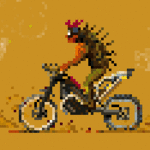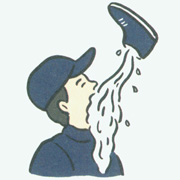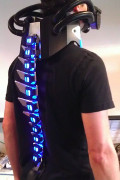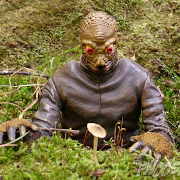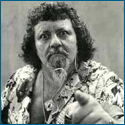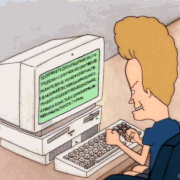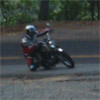|
Razzled posted:Ah okay, I thought that but for a little bit if I pushed it to half choke after starting it would just die. It took some fiddling to get it to idle at half. Protip: You can ride the bike with the choke on.
|
|
|
|

|
| # ? May 16, 2024 16:42 |
|
Re: triggering lights, another method I've seen suggested is thumbing the starter, so that the magnetic field generated tricks the coil into triggering. I tried this a couple of times on my VTR250 just for shits and giggles, can't say for sure whether it worked or the lights changed soon after due to coincidence. I've never really had much trouble in Sydney, they all seem to trigger fine. On the Street Triple R, I discovered when trying this that being all electronic, it doesn't activate the starter. It starts the lap timer. :P
|
|
|
|
KozmoNaut posted:It sounds a lot like this issue (a known issue with the 660cc engine), get it fixed as soon as possible: Seems easy enough, I'll have a crack at it this weekend. From a bit of searching I saw that people had ridden with it like this for some time before it caused any significant damage so it should last until this weekend (I hope). Seeing as I just changed the oil a couple days ago, I should just be able to reuse the oil, right?
|
|
|
|
I wouldn't ride it, just for good measure. Reusing the oil is fine.
|
|
|
|
KTM has been using the phrase "The Number of the Beast" for their 1290 Duke campaign. Here's to page 666 (assuming you have the same number of replies-per-page as I do) and to a 5-cylinder 2-stroke 666cc Kawasaki.
|
|
|
|
Xpost from the SV thread since it doesn't get much traffic:AncientTV posted:So when I was taking apart my forks, one of tiny springs that goes in the oil lock turned out to be smooshed. I tried to order a replacement, but stupidly just ordered a damper rod spring. I'm seeing some people online say that the springs aren't necessary. Is that true, and therefore can I leave them out, or, if they are necessary, can I just get a similarly sized one at a hardware store? I've since gone to the hardware stores and was unable to find a spring even marginally close. I got one that's the right gauge and diameter, but I'm not sure how to go about making the dead coils at either end.
|
|
|
|
captainOrbital posted:KTM has been using the phrase "The Number of the Beast" for their 1290 Duke campaign. 5-cyl inline 2 strokes sound... angry. https://www.youtube.com/watch?v=_hn9LidVa6g
|
|
|
|
Dead Pressed posted:Clymer or haynes manual for a gen 2 KLR? I'm just using this Which unfortunately is useless for helping me figure out how to remove this:  Does anyone have any ideas? I've been poking prodding pulling and squeezing it to no avail, and I'd rather not break the clips with my ham fisted idiocy  Edit: Nevermind, figured it out seconds after posting (of course). Just shove a screwdriver in between the slotted clips. vv Thanks for the replies! Catatron Prime fucked around with this message at 02:57 on May 21, 2014 |
|
|
|
I think you have to gently pop the retaining clip up with a flathead screwdriver or similar.
|
|
|
|
Find the right size spanner, take it off. Coolant will leak out. They just unscrew. The electrical cords should slip off without too much hassle. e: yeah, I didn't realise you meant the power cords were the problem.
|
|
|
|
captainOrbital posted:KTM has been using the phrase "The Number of the Beast" for their 1290 Duke campaign. ReelBigLizard posted:
Sounds perfect for one of the Beast's rides 
|
|
|
|
I finally have my bike back together and she's running good. One problem, though- The rear brake isn't working properly. I've got a new rotor on the rear. It's an EBC Vee (was the least expensive I checked the piston, and while it's pushing in & out, it's definitely sticking. The wheel barely rotates a half turn before stopping, and you can see on the rotor where the pads are rubbing. I'm thinking I should drain the line, take the caliper off, clean it out and see if that does anything? I've still got life on the pads, but have a new set I'm going to throw on. Thoughts/suggestions? Everything was working fine before I fan into my self-inflicted wheel issues.
|
|
|
|
Bleed it again.
|
|
|
|
It would be the most simple solution, wouldn't it? I'll give it a shot tonight when I'm home from work.
|
|
|
|
I find brake lines need to be bled, then let to sit for a period of time, then re-bled to finally get working.
|
|
|
|
It might also be useful to put some pressure on the pedal overnight.
|
|
|
|
KARMA! posted:It might also be useful to put some pressure on the pedal overnight. I've heard this bit of wisdom before, does it actually work?
|
|
|
|
Yeah, what it does is allow all the little microbubbles that can form a way to float up past the piston in the MC. They'd normally get stuck there and then slowly get washed downstream when you bleed, or just get compressed hard enough to dissolve back into the fluid if you pumped it up hard enough. Leaving a little pressure on the brakes overnight lets both the bubbles migrate up and out to the top of the MC and the dissolved gasses a chance to come back out of solution and then migrate up as well. e: If you used a tool to pressure-bleed the brakes then you wouldn't necessarily need to do this, but if you're not a mechanic with fancy tools you're going to be doing the squeeze-bleed-squeeze method along with the rest of us. That's where the "slight pressure overnight" comes in handy. Kilersquirrel fucked around with this message at 21:06 on May 21, 2014 |
|
|
|
Here are stupid questions: I bought a new CBR600RR a couple weeks ago, and today I did a careless thing that left the bike lying on its side in my driveway. I picked it back up and everything looks OK except some paint loss on the fairing, a scuffed bar end, and a mark on the mirror. Since I feel confident I won't do that again, I'm going to chalk it up to a lesson learned and just replace the marred fairing. Where can I get a new OEM fairing piece without having to spend a fortune? And do they come with the graphics in place and all that, or is that not how this works? I took a look around some CBR forums to see what they knew, but I just don't trust those clowns out there on the Internet at large. When I'm being smart enough to keep the rubber side down this thing is a hoot. The first time I got back on my Ninjette to go to work I thought something had malfunctioned because twisting the throttle didn't seem to have any effect. I predict this new Honda is going to be huge entertainment for years to come.
|
|
|
|
Frosty- posted:I predict this new Honda is going to be huge entertainment for ftfy 
|
|
|
|
Give it a few months before you replace the fairing, you'll probably drop it again stupidly. Took me 2 years to drop any of my bikes, didn't drop my 1st ... dropped my 2nd twice within' a month both at pretty much a stop (backing up/about to do a turn, but barely moving). I can't imagine the fairing is that badly marked from a driveway drop. I didn't put a mark on my bike either time I dropped it.
|
|
|
|
So my bike has an interesting quirk with neutral. - When the engine is off, it goes into neutral perfectly. - If I've been riding around normally and going through all the gears, then come to a stop and let the bike idle, it also goes into neutral just fine, about 95% of the time. - If I've been moving in stop and go traffic, only going between first and second and using the clutch a lot, the next time I come to a stop and let the bike idle, there's at least a 50% chance that the transmission won't go into neutral. The shifter will feel stuck and it will take a lot of extra force to get it to move, and it will pop over into second. - HOWEVER: if I give the bike even the tiniest bit of gas, like revving it from the 1200 idle to about 1500, I can slip it into neutral with the tip of my toe. Works perfectly. So I also have no problem shifting up as I leave the stop because the engine is running above idle. - The transmission also goes into neutral without issue when the bike is rolling, regardless of engine speed. This isn't something I find problematic -- as noted, I can get into neutral at any time with a blip of the throttle, and according to the Hawk forums it's just the way Hawk transmissions function and the solution is what I'm already doing. But my question is: why does this happen? What's the underlying mechanical reason that the transmission is stubborn about finding neutral at idle? And most strangely, why would it be different when I've been riding normally and using all the gears vs. just been riding around slowly in first and second? e: my CL350 was the opposite way -- you'd have to let the engine drop to idle in order to get it into neutral, and if it wouldn't go the solution was to roll it back and forth a few inches. Sagebrush fucked around with this message at 06:38 on May 22, 2014 |
|
|
|
Sagebrush posted:So my bike has an interesting quirk with neutral. I'm not sure what causes it but every Italian bike I've ever ridden has been exactly like that too, with the addition that the easiest way to get into neutral at a standstill is to drag the clutch a little bit. Someone did once explain it to me but I forgot why, I *think* it has something to do with the clutch plates sticking slightly, and that pulling the clutch in when there's a big difference between road speed and engine speed breaks that stiction and gets you into neutral more easily.
|
|
|
|
My Yamaha does the same thing. Most of the time, it slips into neutral perfect, but too much stop and go in 1st-2nd and it will occasionally get picky and not want to move up into N from first unless I roll it with my feet or slip the clutch a hair.
|
|
|
|
My old Yamaha did that, the Sportster did it and so does the Ultra. The cure was the same for all of them that the others describe.
|
|
|
Sagebrush posted:So my bike has an interesting quirk with neutral. My old NC30 was exactly like this. If you gave it enough of a beating it would stop going into neutral at all unless you quickly blipped the engine to around 4,000rpm. I'd love to know why it happens.
|
|
|
|
|
Kilersquirrel posted:Yeah, what it does is allow all the little microbubbles that can form a way to float up past the piston in the MC. They'd normally get stuck there and then slowly get washed downstream when you bleed, or just get compressed hard enough to dissolve back into the fluid if you pumped it up hard enough. Leaving a little pressure on the brakes overnight lets both the bubbles migrate up and out to the top of the MC and the dissolved gasses a chance to come back out of solution and then migrate up as well. I am a firm believer that the "pressure on the pedal/lever overnight" method is at best a band-aid for a different problem and at worst a complete placebo.
|
|
|
|
On my own bike, pressing the brake lever just slightly lets me sink the brake piston back in much more easily than not(yes I know I should just bleed it out the valve anyways). When I bought my first bike the brakes were completely drained and need a fill, I did the normal pump-bleed-pump thing and while it got most of the air out there was still a little trapped. I left the cover off and pressed the brake lever just slightly and got a slow stream of tiny bubbles out of it over the course of 5-8 minutes. So pressing the lever a little bit can provide a way for some stuck air to get out, at least with 80s and 90s Honda cruisers. That all being said, it's an old-timer's trick that was picked up on old bikes, and I'd expect it's a placebo for anything modern and late-model. Particularly if it's advanced enough to have ABS and other things like that. Don't forget both manufacturing and materials quality are miles ahead now of what they were just 10 years ago, and bike manufacturers are more known for occupying the "ehhh good enough" end of the spectrum rather than the "nothing but perfection" end. quick edit: you can still make pressure with a technically-leaky system, the pressure you make is just affected by how big the leak is.
|
|
|
|
A motorcycle brake system is pushing around 800psi when pressurised (there is a reason those lines are braided). If you have a leak of any size, 800psi overnight would push fluid out somewhere. Since discussing it here previously I did some more reading up about solubility of gases in solutions. The pressure generated is easily enough to push any air into solution in the brake fluid. You really are just making fizzy brake fluid. This is why the overnight zip-tie is only a band aid, and why the brakes will soon become spongy again with a little use. It is possible that as the gases come out of solution again the bubbles will reform in places where they can escape more easily, but as the brake fluid doesn't flow about that much in the system you're only going to get rid of a little at best.
|
|
|
|
Sagebrush posted:So my bike has an interesting quirk with neutral. If it only happens when the bike is hot from extended clutch use, I'd bet the additional heat is causing the plates to stick slightly (either because of thermal expansion, because the plates don't separate all that much when the clutch is pulled in, they warp ever so slightly when hot, or a variety of other factors). You punting the throttle causes the difference between engine speed and transmission speed to completely cause the clutch to spin free, and you can easily shift into neutral. Basically, think about the clunk as the bike goes from neutral to first when cold, and you're pretty much having that problem in reverse - everything is spinning, under very light load, and slightly stuck together, and you're trying to get half of the transmission to freewheel in neutral against the force of the engine. If you rev the engine or slip the clutch slightly, you break the stiction that the clutch is experiencing, and it's easier to get into neutral now that the entire system is fully disconnected. It also depends on the design of the fork drums, the transmission, as to if it goes into neutral easier or with more difficulty when placed under light load - I'd imagine undercut gears also contribute to the difficulty of unlinking the transmission bits. Z3n fucked around with this message at 17:27 on May 22, 2014 |
|
|
|
My XLR is getting really hard to kick start. Sometimes it'll start right up, other times no amount of kicking will get it to turn over (have to push-start it). Seems to be a little stuttery at lower RPMs accelerating from a stop sometimes. Wondering if carbs are due for a cleaning? Last time was something like 10-15k kms ago, I think.
Pompous Rhombus fucked around with this message at 03:37 on May 23, 2014 |
|
|
|
Unless your tank is full of rust, your gas is awful and old or the bike's been sitting for a while, you shouldn't really have to clean the carburetors at all. The varnish deposits that gasoline can leave behind are dissolved very well by, surprise, gasoline. If you have some flow through all the jets and there aren't little sand grains or rust particles or paint chips floating around, all the important parts should stay clean automatically. e: and don't forget the number one rule of motorcycle maintenance: if you think it's a fuel issue, it's electrical; if you think it's electrical, it's fuel. You think it's fuel, so check your battery.
|
|
|
|
Sagebrush posted:Unless your tank is full of rust, your gas is awful and old or the bike's been sitting for a while, you shouldn't really have to clean the carburetors at all. The varnish deposits that gasoline can leave behind are dissolved very well by, surprise, gasoline. If you have some flow through all the jets and there aren't little sand grains or rust particles or paint chips floating around, all the important parts should stay clean automatically. No battery!
|
|
|
|
Pompous Rhombus posted:No battery! Well there's your problem.
|
|
|
|
I noticed a few weeks ago that my cbr has a little bit of a wobble when I'm below 20 mph and hard on the front brakes. I saw that the pads were low (about 1/16" left), so I decided to change them to see if it rectifies the issue. Its been a couple of weeks since the change, and the wobble is still there. When I get below about 20, I can feel a pulsation through the bars. The wheel feels like it's pulling to the right then letting up over and over. Looking at the brake discs, the don't look warped badly. I don't feel major grooves anywhere. I noticed that the outside pad on the right seems to have a darker section towards the center of the wheel like its been hitting there first. Ideas? I'll go take some pictures of the disc I'm suspicious of. Edit: posting from my phone, sorry for not formatting these properly: http://imgur.com/vjni6tr http://imgur.com/R652e34 http://imgur.com/Y51eRZV Day Man fucked around with this message at 16:29 on May 23, 2014 |
|
|
|
My 1981 Goldwing has some light rust in the tank and I'm too lazy to take it out to clean it. Would it be a terrible idea to try cleaning it with vinegar while it's still in?
|
|
|
|
Are there rust flakes floating around inside or coming out of the petcock? If you clean the filter and run a tank of gas through, is the filter still clean or full of junk? Cause if there's nothing floating around I wouldn't worry about it. Surface rust is just that -- on the surface. Gasoline will displace moisture and prevent further oxidization if you keep the tank full. It's the crusty pieces that break off that you need to worry about.
|
|
|
|
Vinegar isn't going to do anything to the rust more than rinsing it with water would. I'd say do it right or don't waste time on it IMO. It doesn't take much effort to remove the tank. I recently swapped tanks and took that opportunity to clean out any gunk hanging around the fuel pump and such. Some people have had luck adding a bunch of bolts or something to the tank and banging it around to loosen up any rust that's hanging out in there. In your case I'd take off the tank and go to Lowe's or similar and pick up some phosphoric acid to clean it up after you do the above. Might want to install a filter as well to catch any particulates that are making it down past the petcock. I guess it depends on how much rust is "light rust"? E:B ^
|
|
|
|
|
I rode it for a month last fall and all this spring, the fuel filter is still clean.
|
|
|
|

|
| # ? May 16, 2024 16:42 |
|
Can anyone identify these pipes? They came with the bike when I bought it, and I haven't seen any like them in my quest for less obnoxious exhaust. I'm looking for either the manufacturer, or even what this style is called.
|
|
|










